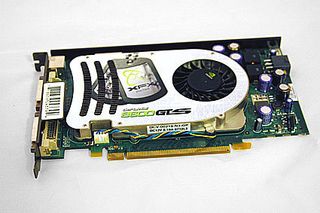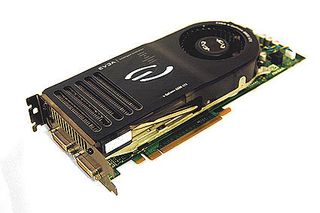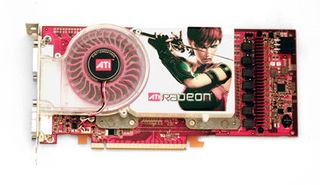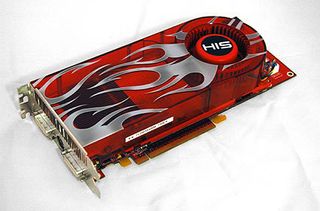AVIVO HD vs. Purevideo HD: What You Need to Know about High-Definition Video
Test System And Installation Notes, Continued
The cheapest video card in our tests, the 8500 GT, isn't a great gamer's card, but it features full-spectrum HD video decode acceleration for disks using the H.264 and AVC codecs, and almost full decode acceleration of HD disks using the older VC-1 codec. Until ATI releases the upcoming Radeon 2400/2600 cards, the Geforce 8500/8600 might be the most cost effective way to get an older PC to handle the high computational load of decoding HD-DVD and Blu-Ray video. We're going to take it to task and find out just how effective it is.

Video card 2: Geforce 8600 GTS
A better gaming card than the 8500 GT, the 8600 GTS also sports full H.264/AVC decode acceleration like the 8500 GT. It will be interesting to see if it sports any real-world video decode performance advantage over its smaller brother.

Video card 3: Geforce 8800 GTX
Nvidia's DirectX 10 flagship is a little older than the new 8500/8600 series cards, and as such it doesn't sport the same full H.264 video decoding technology. It will be interesting to see what it can accomplish in the HD video arena compared to its young upstart cousins.

Video card 4: Radeon X1900XTX
The Radeon X1x00 architecture was the best ATI had to offer until the new Radeon HD 2900 XT was introduced recently. We'll include it for reference to see what it can do. A point of interest is that the X1900 XTX isn't HDCP enabled like its newer X1950 PRO and XT/XTX cousins, so it was unable to play protected content via a digital DVI connection - we had to use the VGA output.
Stay on the Cutting Edge
Join the experts who read Tom's Hardware for the inside track on enthusiast PC tech news — and have for over 25 years. We'll send breaking news and in-depth reviews of CPUs, GPUs, AI, maker hardware and more straight to your inbox.

Video Card 5: Radeon HD 2900 XT
Compared to Nvidia's 8800 series, the HD 2900 XT has gotten mediocre reviews in the gaming arena since its introduction. In the HD video arena, it's already taken a bit of a PR beating since it's been revealed that the 2900 XT won't support the same fully accelerated video decode capabilities of the upcoming 2400/2600 cards.
However, the HD 2900 has some nifty tricks up its sleeve, like a native HDMI connector and its own audio processor! This audio processor allows the HD 2900 XT to deliver protected audio through the HDMI interface, which means that the user will be able to experience the highest quality audio possible. As far as I know, every other video card with an HDMI output does not have this capability, and therefore audio quality will be degraded during the playback of protected content like HD DVDs or Blu-ray disks.
Addendum: Due to limitations we have not yet explored concerning the HDMI interface on the PC, even the 2900 XT cannot provide the highest quality/bandwidth audio that the HDMI interface is capable of hosting, such as Dolby True HD or DTS Master Audio formats. The 2900 XT's sound quality increase over any other video card with HDMI output - one that requires a separate cable to bring audio into the video card - is debatable, and we will delve into sound quality/protected audio issues in our next Purevideo HD/Avivo HD article. For now, keep in mind that the strength of the 2900 XT is not that is offers the highest quality audio that the HDMI interface can handle at this time. The 2900 XT's most compelling audio feature is that when using the HDMI output, it does not require an audio cable to be attached from a separate sound card or motherboard. Most other video cards with an HDMI output require a separate audio cable between the sound card and video card for audio to work over HDMI.
Interesting features, but now let's put the 2900 XT to the test and see if it can deliver in real world scenarios
Current page: Test System And Installation Notes, Continued
Prev Page Test System And Installation Notes Next Page Image Quality Benchmarks - HQV's High-Definition Video BenchmarkMost Popular

